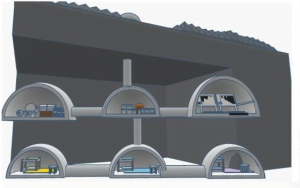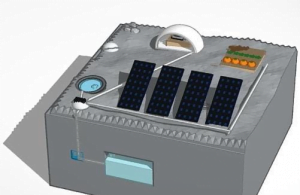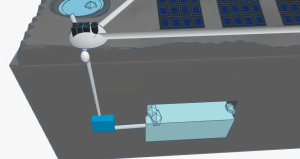Registrations are closed
In the future, to enable astronauts to stay on the Moon for long periods of time, new infrastructures must be developed to overcome important challenges. Such challenges include protection from radiation and meteorites, energy production, the extraction and recycling of water, food production and much more. The Moon Camp Challenge invites students to explore the Moon and decode some of the complexities future astronauts may face.
In Moon Camp Discovery each team’s mission is to 3D design only one component of a Moon Camp using Tinkercad. Teams can choose to design a:
– Lunar lander
– Moon Base
– Lunar rover
– Rocket
– Lunar Orbital Space Station
The design should be adapted to the Moon environment and if possible consider the use of local resources, provide protection and/or living and working facilities for the astronauts.
Moon Camp Discovery is a non-competitive mission for beginners. All teams that submit an entry that complies with the guidelines will receive a participation certificate and their project will be shared on the Moon Camp online platform.
Who can participate?
Participation is open worldwide to students aged up to 19 years old. Moon Camp Discovery is recommended for students aged 6 to 14 years old. Participating students must be supported by a teacher, educator or parent.
Discovery Projects Gallery 2020-2021
Below you can find some of the Moon Camp Discovery projects. For more projects visit the Moon Camp Discovery project gallery.
Team: Procidens Stella
Cluj-Napoca Romania Category: Moon base
External link for Tinkercad 3D design
Our name, Procidens Stella, is coming from falling stars in Latin language. We have found a quite poetic meaning of our team title. These falling stars are hitting the moon with an unreal big power and in the moment they touch the moon ground they change the moon completely and forever. The falling stars represents us and the impact that is created between the falling stars and the moon ground it shows our impact that our lunar base is having on the moon. It will be an importance change of the life on the satellite, from the twenty first century.
The best place to put a crewed base is the lunar south pole. There you have constant sunlight. Their location is not only crucial for generating solar power, but they sit next to craters in permanent shade, where water is stashed away in ice. Temperatures are much nicer between minus 50 and 0 degrees. There are the lava tubes that have been there for a long time and now they are tunnels, where are minus 20 degrees and you can live in them. You can make a lot of experiments and you also have good connection with the earth.
For energy, we will use solar panels. Since we are stationed at the South Pole, solar panels will offer our base more power. There will be around twenty solar panels there. For the eclipse periods a certain amount of the produced energy will be stored in a generator connected to the base through a tube.
A supplementary option is to use geothermal energy, which will provide us with power when the temperature rises. For example, if a meteorite makes contact with the moon, it will create a crater allowing us to use this form of energy as an alternative.
Protection is a very important thing in an inhospitable space like lunar environment. Protection means safety and defending our life and integrity against dangers from outer space.
First of all we can protect the plants with pressed plastic of about 20 cm thick, hard enough to resist temperatures high or low and transparent enough so the light from the sun can reach the plants.
The same thing we can do with the entire lunar base, so the oxygen and all life ingredients can remain inside the building and polluted gases from the factories to be eliminated outside in space through tubs.
- Spirulina is a blue-green micro-algae, this super food dates back over 3 billion years and is the most well-known of the sea algae.
- We will grow spirulina in some aquariums.
- We will grow salad, carrots and spinach because these plants grow faster, so we can plant more often.
- About where we’re going to raise them, we’re going to grow them in a tight greenhouse.
This water recycling system will help us recycle whatever we produce. When we breathe this system will collect the water particles from the breath or when we pee, this system will purify so that we will get clean water.Another way we can get water is to get ice off the moon. after we get the ice we can melt it and then purify the water we get. Since life on a Moon base is quite difficult, the astronauts are having a daily routine that resembles the one they had on Earth. They have their watches adjusted to the normal GMT time zone.They wake up early, wash themselves with the wet towels, since there is no running water on the base, and have breakfast that is usually a paste they eat with a straw. They sometimes indulge themselves with some solid food they are sent from home. They sometimes go out in missions to explore different parts of the Moon and collect soil for analyses or even ice from the frozen lake to melt it into water. After lunch they have a few hours on their own in which they can read, write in their diary or simply watch the beautiful Earth. They usually have at least two hours of sports, mainly on a stationary bicycle since without gravity their muscles start to weaken. They have dinner and go to sleep in their cabin usually in a sleeping bag so they do not float during sleep.



















